5 Curly Hair Cats That Have Personalities as Unique as Their Coats
Find out how we have a cat named Miss DePesto to thank for so much cuteness!
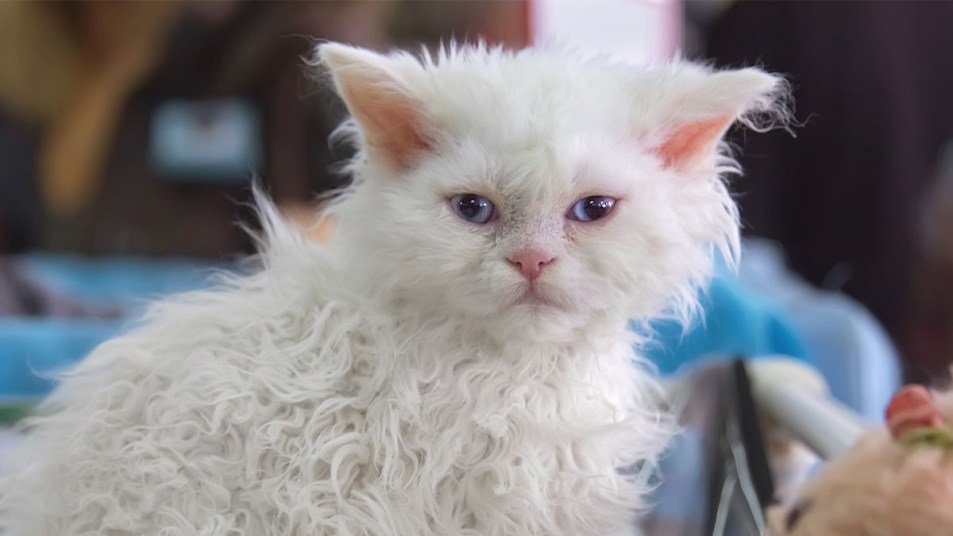
Even dog lovers have to admit that cats can be quite beautiful. With their graceful gaits, colorful eyes and variety of coat shades and patterns, felines are visually striking animals. And for truly eye-catching kitties, look no further than curly hair cats. These breeds have coats full of swirls, curls and kinks that, if we’re honest, makes them look like stuffed animals. And their origins is just as fascinating as their appearance! Keep reading to see photos of and learn more about these adorable kitties, plus find out what a vet says you need to know before adopting a curly hair cat.
These curly hair cats are cute as can be
Need to brighten your day? We can’t think of a better solution than looking at cute kitties. Keep scrolling to see these adorably curly hair cat breeds and to learn more about their unique histories, personalities and needs.
1. LaPerm
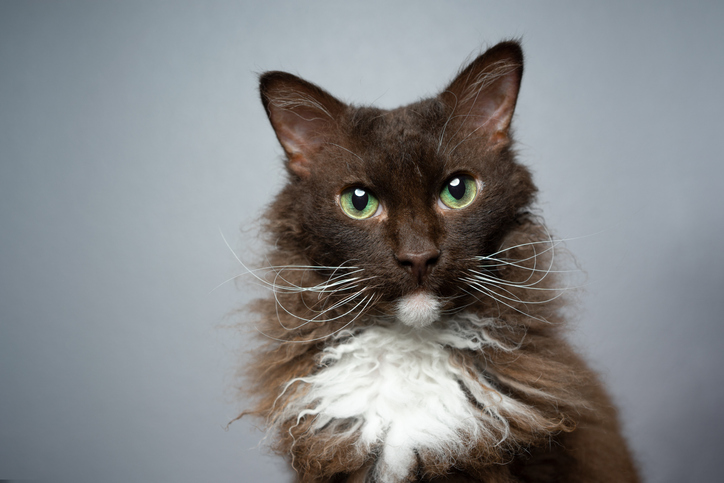
What better name is there for a curly hair cat than “LaPerm”? This breed has its origins in 1982, when a kitten named Curly was born to a brown tabby cat in Oregon. Curly came out bald, with widely spaced ears, and when she finally started to grow fur, it was curly. She was bred with other cats, and soon, the LaPerm breed was established and officially recognized internationally in 2002.
LaPerms are quiet, mischievous cats that enjoy human company, but they aren’t clingy or codependent. They’re playful and patient, which makes them good family cats. They’re known for being adept with their paws, so lock any doors you don’t want your LaPerm to open!
2. Selkirk Rex
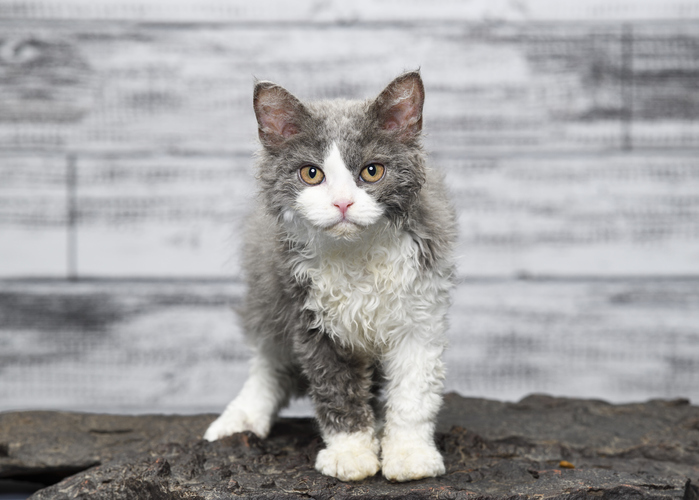
“The genetic origins of the curly hair in Selkirk Rex cats can be traced back to a single cat named Miss DePesto,” says Dr. Maria Baker, DVM, owner of Pet-How.com. Miss DePesto was born in 1987 and the only one in her litter with curly hair. She was bred with many other cats and is known as the first Selkirk Rex, which was first officially recognized as a breed in 1994.
Aside from being beautiful, Selkirk Rexes are affectionate and codependent — they prefer spending time with their humans to being left alone. They’re also known for remaining playful and kittenlike, even into adulthood.
3. Cornish Rex
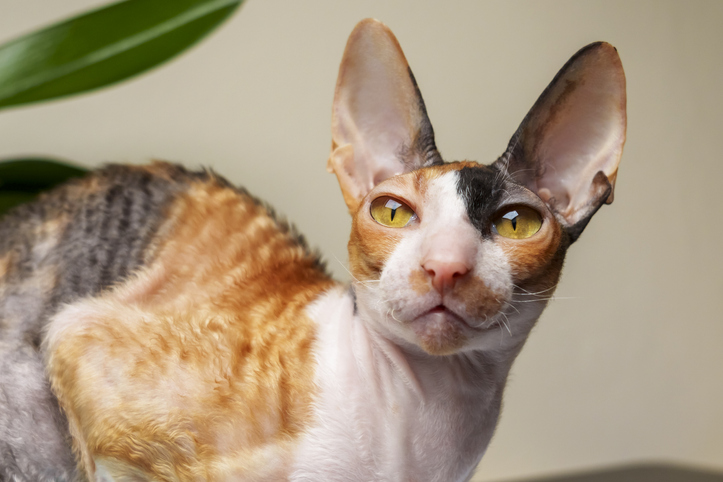
The first known Cornish Rex, named Kallibunker, was born in Cornwall, England, in 1950. He was the only kitten in his litter to have large ears, a slender body and a curly coat. Kallibunker was then bred with other cats, which resulted in similar-looking kittens, and the Cornish Rex was recognized as a breed in 1964.
Though their appearance is striking — almost intimidating — the Cornish Rex is a playful, social cat breed. They’re intelligent, affectionate and, with their long limbs, incredibly agile. Because they’re so athletic and smart, they may be prone to mischief, so if you adopt a Cornish Rex, you may need to safeguard you cupboards and shelves!
4. Ural Rex
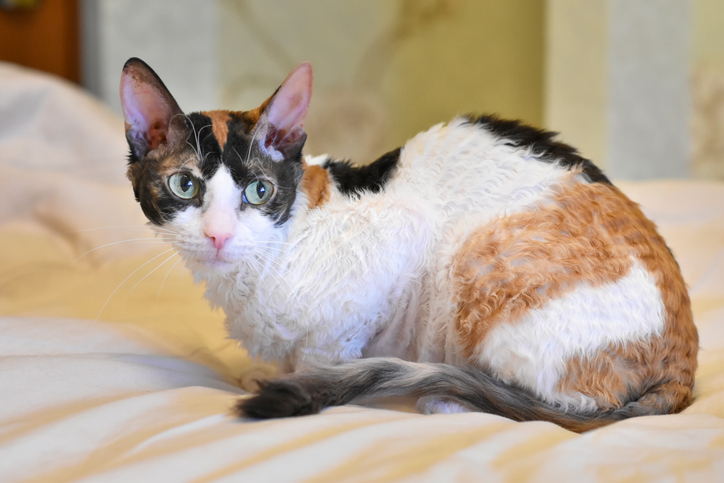
Originating from the Ural Mountains in Russia, the Ural Rex’s curly cut is thought to be the result of a spontaneous genetic mutation. In 1988, efforts began to establish and continue the breed officially, and in 1992, the Ural Rex participated in a cat show for the first time. Though it’s still rare in the United States, Ural Rexes are popular in Germany and Russia, and they come in both shorthair and longhair varieties.
Ural Rex cats are calm, affectionate cats that get along well with children and families. They thrive when given attention, and they’re very sensitive to owners’ emotional states. They’re also not very vocal, so if you don’t want a cat that meows a lot, the Ural Rex might be for you.
5. Devon Rex
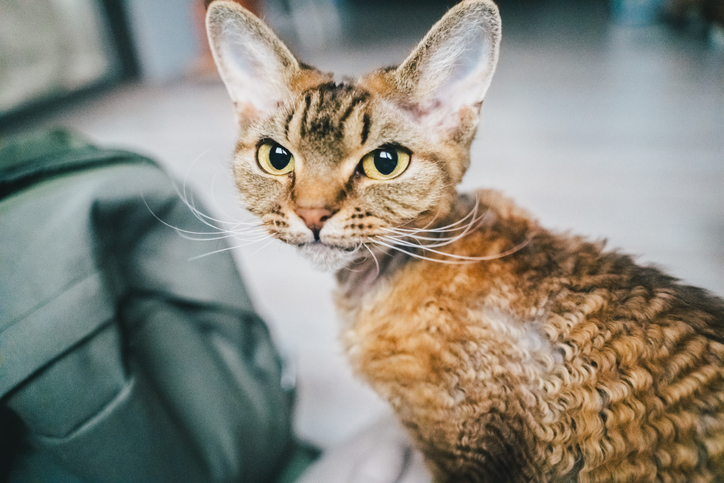
All Devon Rexes can be traced back to a British kitten named Kirlee that was born in 1960. Kirlee’s mother had straight hair, and his father’s was curly. Kirlee’s large, low-set ears and distinctively shaped, elf-like head are now the standard for the Devon Rex, which was officially recognized as a breed in the United States in 1972.
Devon Rexes are notoriously curious, courageous and playful. They love to explore their surroundings and participate in whatever their owners are doing. They’re affectionate, comical and unique cats for people that enjoy their constant company and antics.
Why some cats have curly hair
When it comes to dogs, certain pups have specific hair thickness and textures due to the history and functions of their breeds. American water spaniels, for example, have dense, waterproof fur for insulating them when swimming. With curly hair cats, however, there is no established genetic advantage to having a certain hair texture. “Curly hair in cats is a result of a genetic mutation, which while not providing a known biological advantage, has been selected and propagated due to its unique aesthetic appeal,” says Dr. Baker.
Making them even more mysterious, not all curly hair cats will give birth to kittens with curly hair. “Cats like the Selkirk and Devon Rex have curly hair due to a recessive genetic mutation that doesn’t always express itself in every generation,” says Dr. Baker. Straight hair is a genetically more dominant trait in most cats, she explains. “But when the recessive curly hair gene is present in both parents, there is a chance their offspring will also have curly hair.”
How to groom a curly hair cat
Before you adopt a curly hair cat, it’s important to know what makes them different from straight hair cats in terms of care. Because these cats have different coats, they also have different grooming needs. Keep reading to see Dr. Baker’s tips for maintaining the fur of a curly hair cat.
Brushing
“Cats with curly hair should be brushed regularly to prevent their curls from tangling and matting,” says Dr. Baker. She recommends using a wide-toothed comb or a slicker brush. “Start from the head and work your way down to the tail, gently detangling any knots. Remember to be gentle since a cat’s skin is sensitive and can easily get irritated. “
Bathing
“Unlike straight-haired cats, curly hair cats may require more frequent baths due to the nature of their fur,” notes Dr. Baker. Remember to rinse shampoo fully to avoid skin irritation. “After bathing, pat the cat dry with a towel instead of rubbing to maintain the curl pattern.” (Once kitty has dried off, click through to see how to trim your cat’s nails.)
Can’t get enough cute cats? Check out these stories:
7 Flat Face Cat Breeds That Are (Almost) Too Cute to Handle
Tuxedo Cats: Everything You Need To Know About These ‘Well-Dressed’ Felines
Looking At Cute Cats Triggers Changes in the Brain That Lower Stress, Say Scientists
Why Do Cats Loaf? Vet Experts Reveal the Sweet Reason Behind This Cute Behavior
These Cats Are Loving Fall — 21 Adorable Photos That’ll Make You Want to Cozy Up Too













